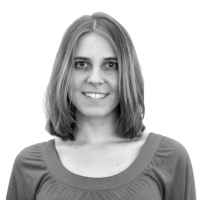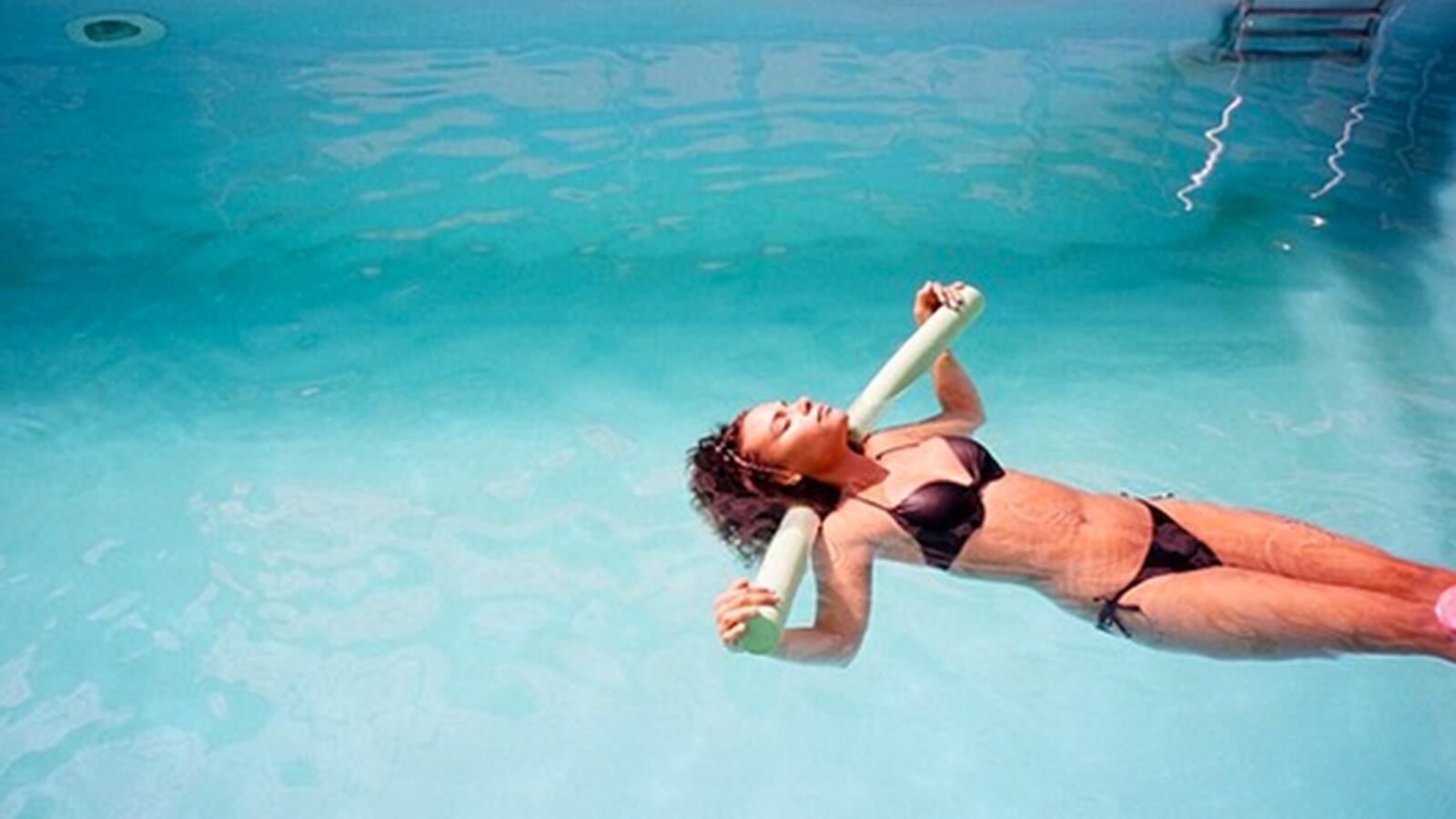It was only to be expected that as soon as super-leggy, ultra-attractive, and—let’s be honest—pretty toned Myla Dalbesio was mentioned within 500 words of “plus-size,” that there would be cries of utter frustration across the web.
Her interview last week on Elle magazine’s website was centered around her groundbreaking role as a size 10 model for Calvin Klein underwear. The article said Dalbesio is “what the fashion industry would—still, surprisingly—call ‘plus size.’”
Delbasio’s is only the latest in a long line of controversies surrounding “plus size” models, with an all-too familiar narrative around it, because fashion itself is still hooked on extremely thin models. Any model who falls outside fashion’s physically narrow confines causes a fuss.
Even when the fashion industry has made the rare attempt to include women who do not look like the typical runway model, it seems to ostracize bigger body types. Vogue Italia put a bunch of plus size models on its cover in 2011 to prove it was body friendly, but made them seem more like a novelty to be gawked at.

Even the most fit and stunning “plus-size” models are still made to seem like outsiders, aberrations granted qualified acceptance into the rarefied modeling world. “I wish we could all be known as models, rather than ‘plus-size.’ It’s skinny models who should be called ‘minus size,’” Robin Lawley, Australia’s first “plus size” model, told the London Times.
Women are tired of having the same fight with the fashion industry. Around the mini-Delbasio furor there were angry blog posts, tweets, and Instagram photos lamenting that the size 10 (which in and of itself seemed surprising, unless it was a European size 10) Calvin Klein underwear model was what was now considered “plus-size.”
Going yet another round over who is considered “plus-size” should be a message to the fashion industry and media: kill the term “plus size” and stop drawing lines (even faint ones) between the thin and not-quite-as-thin models.
The term “plus-size” causes anger because the distinction inherently shames the woman concerned—and it gets worse. It can be bad enough to have your clothes described in the decidedly unsexy way as “plus-size.”
It is the final indignity to see a svelte woman who doesn’t remotely resemble your body to be labeled “plus size.” It’s almost as if the fashion industry is pretending that such a model somehow represents you and speaks to your body struggles or, worse, tacitly implies you should aim to look like her.
In brief defense of Calvin Klein, the fashion designer never called Delbasio “plus-size”—at least not exactly. Dalbesio made it clear that Calvin Klein never labeled her “plus size,” nor treated her differently than the other waifish models. “It’s not like [Calvin Klein] released this campaign and were like ‘Whoa, look, there’s this plus size girl in our campaign.’ They released me in this campaign with everyone else; there’s no distinction. It’s not a separate section for plus-size girls.”
Calvin Klein also made sure to cover its generally bone-skinny ass, giving a statement to the New York Times that Dalbesio and the other models were chosen to show that its new Perfectly Fit line “was created to celebrate and cater to the needs of different women, and these images are intended to communicate that our new line is more inclusive.”
A backlash against those who had criticized Klein formed, but it was at times used to slam critics who have legitimate critiques of the body image standards set by the fashion industry.
Charlotte Alter at Time.com mocked the general outrage people feel when women who appear perfectly thin to mainstream audiences are called “plus-size.” She described how “in certain circles [it] is the moral equivalent of eating a baby orphan.”
However, she missed the point that when clearly fit, healthy women are given a label like “plus-size” to connote they are larger and heavier than average, it fucks things up for all the actually typical-looking and bigger than typical women, who already see themselves as alienated from the stereotypical runway look. While admitting Calvin Klein’s new campaign could have hired a size 14 or, dare we even say, 16 model to push the envelope, Alter ultimately praised the brand for taking a “big step forward.”
A look at Calvin Klein’s website shows that step may actually be quite small. The bras in Perfectly Fit don’t go larger than 38DD, and only one of the designs offer that option. The new bikini under Perfectly Fit does not appear to go higher than a large.
There’s a reason fashion brands receive knee-jerk hate on body image issues. Despite decades of well-articulated complaints about the unhealthy body standards it so often promotes, the fashion industry tends to respond with half-baked attempts like using “plus-size” women as novelties, exceptions rather than regulars for “special” spreads.
Mainstream fashion magazines are often no better, featuring Beyoncé, Nicki Minaj, or Sofia Vergara as examples of women who “bravely” defy stereotypes as “curvy” women when in reality, they are thin, toned women that meet all the conventional standards but with the added benefit of great breasts and butts.
As with the term “curvy,” part of the problem with using the term “plus-size" is that there is no sense of what fits under the label. Different fashion websites say a “plus size model” is a size eight or bigger, while others say it is 12 or higher. Even with the Delbasio controversy, some sites have debated whether Elle was correct in saying the fashion industry would call her “plus-size.” Delbasio herself uses the term “in-betweenies,” saying on Tuesday’s Today show that “we’re not skinny enough to be straight-size—[meaning] these size 0, size 2 girls—and we’re not large enough to be considered for plus-size.”
While I understand what Delbasio is going for with “in-betweenies,” making further distinctions isn’t the answer. Just scrap “plus-size.” Any sort of distinctive term just emphasizes that she is supposed to be considered an outsider.
Delbasio is beautiful, well-spoken, and artistic (really, everyone should listen to the entire interview), and it is sad that she is considered to be Calvin Klein’s achievement at body diversity or that she even has to address her different “look.”
While she has only glowing things to say about Calvin Klein (and again, that is her employer), Delbasio articulates the current body pressures better than any critics or defenders of the fashion industry. At the bottom of the page, is a longer video interview with her that few commentators seemed to have actually played.
Dalbesio not only talks about how her body struggles led her to crash diet and abuse Adderall; she also doesn’t pretend to have wholly embraced her curves. With a self-consciousness that is oddly refreshing for the often plastic, emotionless modeling industry, Dalbesio talks about how she looks towards bigger women who are unapologetically sexy to make her feel more comfortable with her own shape.
She loves porn magazines aimed at African-American men featuring “radical women with amazing butts” because “they are such unique and powerful idea of what a woman is to me.” Going off on a dreamy tangent, she asks the interviewer. “Do you ever go to the beach and see a woman who is like 300 pounds and she is wearing a thong, like a lime green thong, and fishnet cover-up? You’re like ‘You look fucking awesome!”
While some women praise others who break physical molds but secretly fear looking like them, Delbasio expresses genuine, unabashed admiration. She seems to yearn to get to that place of comfort.
Removing distinctions like “plus-size” would get her and millions of other women closer to that level of acceptance. Instead of constantly comparing ourselves to each other, we should be able to see different body types simply with veneration. “Isn’t this fucked? I’m a model, and I feel this way. I need this validation,” Dalbesio exclaims. And she’s right. It’s totally fucked.






